
Gauntlet Legends is an arcade game released in 1998 by Atari Games and Midway Games. It is a fantasy themed hack and slash styled dungeon crawl game, a sequel to 1985's popular Gauntlet and 1986's Gauntlet II and marks the final game in the series to be produced by Atari Games. Its unusual features for an arcade game included passwords and characters that could be saved, enabling players to play over the course of a long period.

Ready 2 Rumble Boxing is a boxing video game developed by Midway Studios San Diego, and published by Midway in 1999 for the Dreamcast, PlayStation, Game Boy Color, and Nintendo 64. The success of the Dreamcast version led to it becoming one of the few Sega All Stars titles.

Vigilante 8: 2nd Offense is a vehicular combat game developed by Luxoflux and published by Activision for PlayStation, Dreamcast and Nintendo 64. It is the sequel to Vigilante 8.

NBA Showtime is a basketball arcade game released by Midway in 1999, featuring teams and players from the National Basketball Association (NBA). The game is modeled after the NBA presentations on NBC and takes its name from NBC's NBA pregame show. It is the successor to Midway's previous basketball titles NBA Hangtime and NBA Jam and is the first in the series to have fully 3-D polygonal graphics, featuring real uniforms for all teams. Showtime was also featured in a dual game cabinet along with NFL Blitz 2000 that Midway dubbed the "SportStation." Midway followed up the game with the console exclusive NBA Hoopz.

Hydro Thunder is an arcade inshore powerboat racing video game originally released by Midway Games in February 1999 and later released for the Sega Dreamcast as a launch title later that year. It was also released for the PlayStation and Nintendo 64 in early 2000. This game is part of Midway's Thunder series of racing games, which includes Offroad Thunder, 4 Wheel Thunder, and Arctic Thunder. Hydro Thunder Hurricane, a sequel to Hydro Thunder, was later released for the Xbox 360 on July 27, 2010 on Xbox Live Arcade.

WWF Attitude is a professional wrestling video game based on the World Wrestling Federation released by Acclaim Entertainment in 1999 for the PlayStation and Nintendo 64. A slightly enhanced port of the game was later released for the Dreamcast, as well as a handheld version for the Game Boy Color. The game is named after the WWF's then-current "Attitude" marketing campaign, with the tagline "Get it" also being used on company programming during that period.
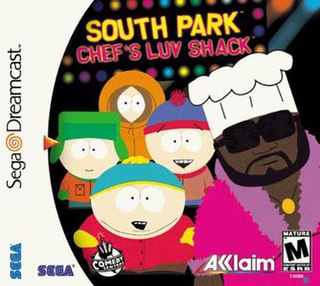
South Park: Chef's Luv Shack is a 2D game show-style party video game and is a sequel to the 1998 video game South Park, itself based on the American animated sitcom of the same name. Developed by Acclaim Studios Austin and published by Acclaim Entertainment, it was released in 1999 for the Dreamcast, Microsoft Windows, PlayStation and Nintendo 64. Its gameplay involves playing minigames and the ability to play against other players in a challenge for the most points. It also involves trivia questions about South Park and other topics.
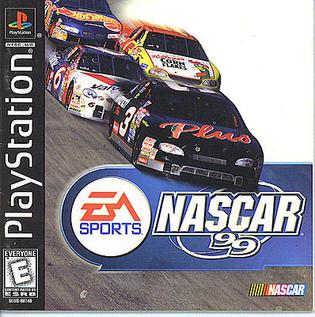
NASCAR '99 is a racing simulator video game developed by Stormfront Studios and published by EA Sports. It was released for Nintendo 64 on September 10, 1998, and for the PlayStation on September 22. NASCAR '99 was the second game in the EA Sports NASCAR series of video games.

ECW Hardcore Revolution is a professional wrestling video game released by Acclaim Entertainment, based on the professional wrestling promotion Extreme Championship Wrestling (ECW). The game was released for the Nintendo 64, PlayStation, Game Boy Color, and Dreamcast in 2000. It was the first wrestling game to be based on ECW, as well as the first professional wrestling video game to receive a Mature rating from the ESRB, although the Game Boy Color version was rated Everyone. Acclaim followed this title with the release of a sequel, ECW Anarchy Rulz, in August 2000.
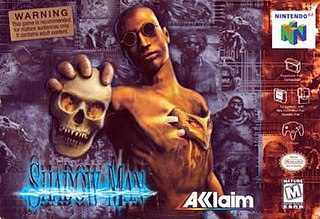
Shadow Man is an action-adventure video game developed by Acclaim Studios Teesside and published by Acclaim Entertainment. It is based on the Shadow Man comic book series published by Valiant Comics. The game was announced in 1997 and was originally slated for a late 1998 release on Nintendo 64 and an early 1999 release for Microsoft Windows, but was delayed to August 31, 1999. A PlayStation version was also released on the same day. A Dreamcast version was released three months later on December 1.

F-1 World Grand Prix, developed by Paradigm Entertainment, is a Formula One racing game/sim first released in 1998 for the Nintendo 64 game console and to later platforms including the Sega Dreamcast, Microsoft Windows, Sony PlayStation, and Game Boy Color. The Nintendo 64 version is based on the 1997 Formula One season, featuring each of the 17 circuits from the season and all 22 drivers, with the exceptions of Jacques Villeneuve and the MasterCard Lola team.

International Track & Field 2000 is a track and field game for PlayStation in 1999 and Nintendo 64 in 2000. It was released in Europe under the name International Track & Field: Summer Games on the Nintendo 64 and Game Boy Color, and in Japan as Ganbare! Nippon! Olympics 2000, where it was licensed by the Japanese Olympic Committee. Versions were also released for the Sega Dreamcast, PlayStation 2, and Game Boy Color as ESPN International Track & Field in North America. Maurice Greene (sprinter), a former men's WR holder in the 100M dash, is the cover athlete.

Monaco Grand Prix: Racing Simulation 2, also known as just Monaco Grand Prix or Racing Simulation: Monaco Grand Prix, is a Formula One racing game developed and published by Ubisoft for the Windows, Nintendo 64, PlayStation, and Dreamcast. It was released in 1998–1999. A sequel, Racing Simulation 3, was released in 2002.
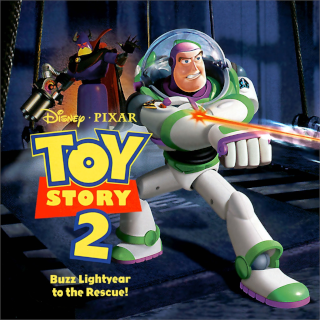
Toy Story 2: Buzz Lightyear to the Rescue! is a 1999 platform game developed by Traveller's Tales and published by Activision and Disney Interactive. Based on Disney/Pixar's 1999 computer animated film Toy Story 2, it was released for the Nintendo 64, PlayStation, Microsoft Windows, and Macintosh in late 1999, while a Dreamcast version followed in 2000. The computer versions were released under the title Disney/Pixar's Action Game, Toy Story 2. A different version, a side-scrolling platform game titled Toy Story 2, was also released for the Game Boy Color in 1999.

Army Men: Sarge's Heroes 2 is a third-person shooter video game developed and published by The 3DO Company for Nintendo 64, Game Boy Color, PlayStation and PlayStation 2. The game is a direct sequel to Army Men: Sarge's Heroes. Unlike the previous game which was more dark in tone, this game has more of a lighthearted storyline.
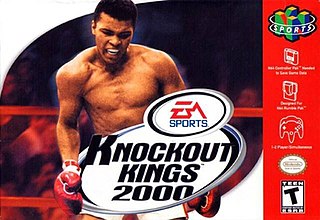
Knockout Kings 2000 is a video game developed by Black Ops Entertainment and published by EA Sports for Nintendo 64, PlayStation, and Game Boy Color in 1999.
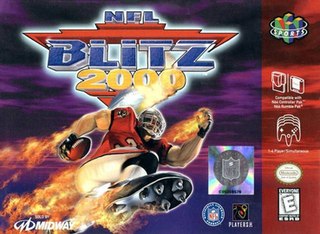
NFL Blitz 2000 is a video game released in the arcades in 1999 and then ported to the PlayStation, Nintendo 64, Dreamcast, Microsoft Windows, and Game Boy Color. It is the third game in the NFL Blitz series.
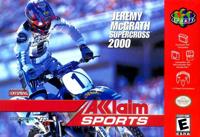
Jeremy McGrath Supercross 2000 is a motocross racing video game developed by Acclaim Studios Salt Lake City and published by Acclaim Entertainment under their Acclaim Sports label for Nintendo 64, Game Boy Color, PlayStation and Dreamcast. It features eight stadium tracks, eight outdoor tracks, and an option for players to create their own custom tracks. In addition to having a racing game mode, players could perform dirt bike tricks in a stunt mode.
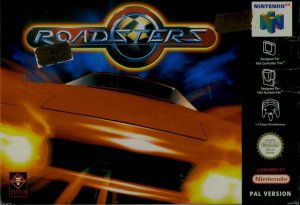
Roadsters is a racing game released by Titus Software for Nintendo 64 in 1999, and for PlayStation, Dreamcast and Game Boy Color in 2000. It is a car racing game that features both licensed cars from manufacturers and unlicensed cars from imaginary manufacturers that are based on and bear great resemblance to their equivalent, real car models. The game also includes a multi-player mode supports up to 2 human players that can compete in any of the available circuits with 4 more CPU controlled racers. A PlayStation 2 version was originally planned to release on April 11, 2001.

NFL Blitz 2001 is a video game developed and published by Midway for the Dreamcast, PlayStation, Nintendo 64 and Game Boy Color in 2000.




















